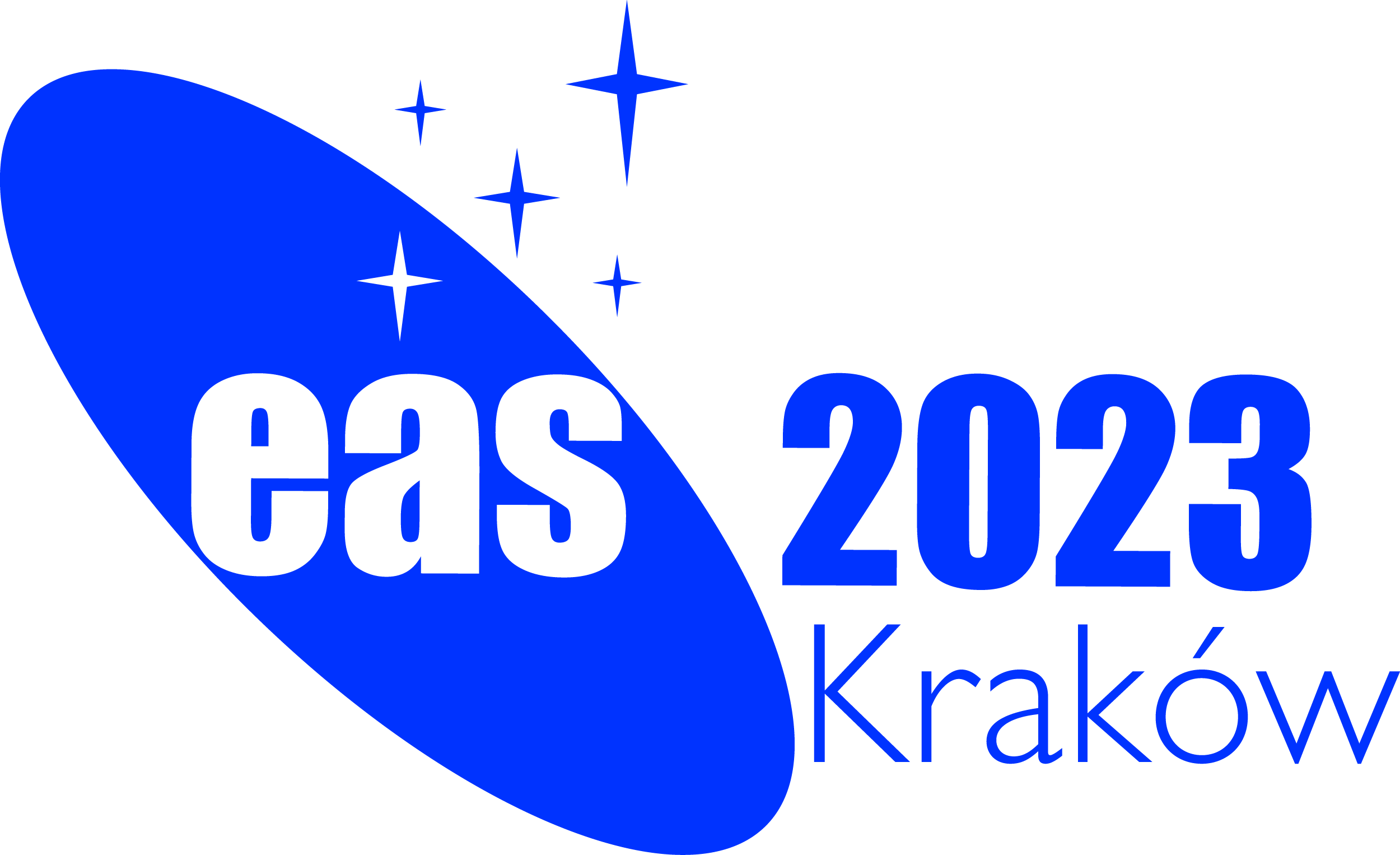Special Session SS24
10 July 2023
The dusty inner regions of active galaxies in the JWST era

Aims and scope
The advent of JWST has ushered in a new era in studies of the central regions of local galaxies. The JWST's unprecedented combination of high angular resolution and sensitivity in the 0.6-28 micron band offers a unique opportunity to investigate the innermost regions of active galactic nuclei (AGN). Studying the nuclear/circumnuclear regions of AGN is crucial to better understand the influence of the nuclear activity in the evolution of the host galaxy. However, at nuclear scales (few tens of pc) the bulk of dust and gas surrounding the AGN is distributed in a toroidal structure where extinction is significant. In these dusty environments, the optical wavelengths are heavily affected by obscuration. Thus, the mid-infrared (IR) is the ideal spectral range to investigate their nuclear/circumnuclear regions where most of the AGN feedback is taking place.
ALMA observations have also shown that this nuclear molecular disk is also part of the galaxy's gas flow cycle. Nuclear AGN-driven outflows appear to be ubiquitous in AGN and are detected in several phases (ionized, molecular and dusty phases). The new paradigm has the torus as part of a gas flow cycle where gas is brought in from the host galaxy and then driven out by the AGN in a wind. Understanding the dust grain distribution and composition and its dependence with AGN properties is vital for observers and modellers to acquire reliable knowledge about the nuclear region of AGN. At the smaller end of the interstellar dust size distribution, there are also the Polycyclic Aromatic Hydrocarbon (PAH) molecules which can be used not only as star formation rate indicators in dusty environments but also as interstellar medium barometers.
Given the state-of-the-art (e.g. JWST, ALMA) and forthcoming cutting-edge facilities (e.g. ELT, GMT, TMT), there has never been a better opportunity to understand dust properties at nuclear scales by spatially resolving the distribution of the dust grains and PAHs in the inner hundred of pc of AGN. Our special session will bring together researchers working on multiphase outflows, the nuclear dusty structure, PAH emission, radiative transfer calculations and AGN dust models to build a complete view of the inner region of AGN and the impact of AGN-driven outflows in the host galaxy to discuss the following questions:
- Can outflows entrain/clear the material (molecular gas and PAH molecules) in the host
galaxy?
- Do these multiphase outflows depend on AGN properties (e.g. luminosity or Eddington ratio)? Are dusty outflows ubiquitous in AGN?
- How does the AGN radiation field affect the dust grain, molecular gas and PAH distributions/compositions in the inner dusty structure?
- Are PAH molecules good tracers of the star-forming activity in the nuclear dusty environment of AGN?
Programme
- Multiphase AGN feedback
- Molecular gas and PAH emission in AGN
- Nuclear AGN dusty structure
Invited speakers
- Francoise Combes (Observatoire de Paris, France)
- Almudena Alonso-Herrero (Centro de Astrobiología, Spain)
- David Rosario (University of Newcastle, UK)
Scientific organisers
- Ismael Garcia Bernete (University of Oxford, UK; SOC; chair)
- Dimitra Rigopoulou (University of Oxford, UK; SOC; co-chair)
- Cristina Ramos Almeida (Instituto de Astrofísica de Canarias, Spain; SOC)
- Andreas Efstathiou (European University Cyprus, Cyprus; SOC)
- Miguel Pereira Santaella (Instituto de Física Fundamental/CSIC, Spain; SOC)
- Erin K. S. Hicks (University of Alaska Anchorage, USA; SOC)
- Taro Shimizu (Max-Planck-Institut fur extraterrestrische Physik, Germany; SOC)
Contact
Ismael Garcia Bernete: ismael.garciabernete @ physics.ox.ac.uk
Updated on Fri Jan 13 20:41:13 CET 2023
|

 A power cut will shut down all EAS services on Tuesday, 10 January 2017 starting at 7:30 CET.
A power cut will shut down all EAS services on Tuesday, 10 January 2017 starting at 7:30 CET.


